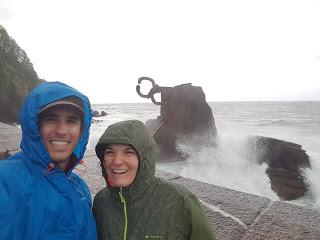
Con el proyecto de hacer la Travesía Pirenaica, siguiendo la GR11, desde el Cabo de Higuer en la costa atlántica española hasta el Cap de Creus en la costa mediterránea nos fuimos hasta Irún, ciudad fronteriza entre España y Francia.
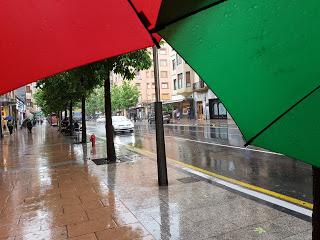
Allí nos recibió de forma increíblemente hospitalaria Álex, el padre de Ainara, el 50 % de la pareja de viajeras NOMAD-AS, Ainara y Sonia, que conocimos entre Australia y Nueva Zelanda hace ya cinco años y que en el último par de años han recorrido el continente americano a dedo.
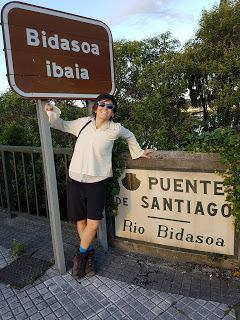
Álex nos preparó el piso de Ainara llenando la nevera y dejándolo todo listo para nosotros. Nos llevó a tomar un café con su amigo Carlos, un señor que ha hecho la GR11 un par de veces ya y que, además de una memoria de elefante, tenía muy buenos consejos que darnos.
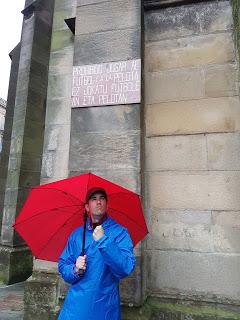
Justo llegamos a Irún en medio de un temporal de lluvia, 100 litros por metro cuadrado en nuestra primera mañana, en el año más húmedo que se recuerda, así que tuvimos que aplazar el comienzo de nuestra travesía un par de días; así que aprovechamos para hacer un poco de turismo.SAN SEBASTIÁNCruzamos Irún de camino a la estación de tren bajo la lluvia, momento en el que descubrimos que mis pantalones y chaqueta impermeables y a chaqueta de Marina ya no eran impermeables; en cinco minutos nos habíamos calado.
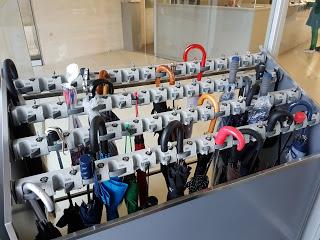
Afortunadamente en el centro de San Sebastián, que está a media hora en tren de cercanías desde Irún, hay una pequeña tienda Decathlon donde pudimos prepararnos para la lluvia. Qué suerte tuvimos de descubrir el “asunto” de los impermeables en la ciudad y no en medio de un temporal en la montaña.
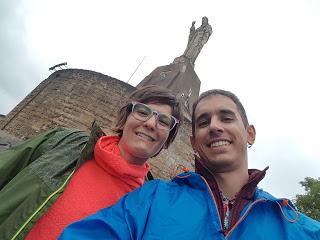
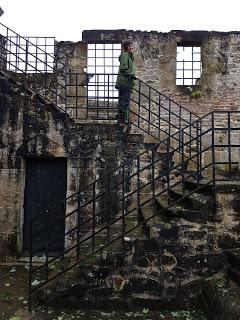
La ciudad de San Sebastián nos gustó mucho a pesar del mal tiempo que hizo. Callejeamos por el casco antiguo, subiendo incluso hasta el Castillo de la Mota en la cima del Monte Urgull, el monte de la canción “La chica del gorro azul” de La Oreja de Van Gogh.
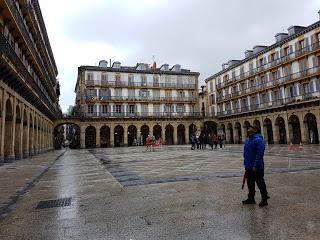
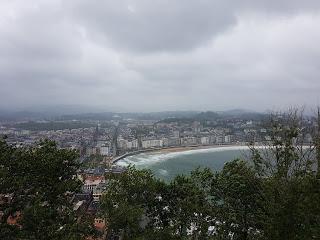
Justo al inicio de la ascensión al Monte Urgull está el Museo de San Telmo, con una exposición permanente sobre la cultura vasca en la que queda meridianamente claro que los vascos prácticamente crearon la civilización y son responsables de la gran mayoría de avances tecnológicos de cualquier edad de la humanidad, como por ejemplo la grapadora M-5, el balancín para niños sin amigos o el aparcamiento para paraguas.Terminamos nuestra visita a Donostia caminando por la Bahía de la Concha hacia la famosa escultura en acero corten Peine del Viento XV del artista Eduardo Chillida.ZARAUTZEl mal tiempo continuaba así que aplazamos el comienzo de la GR11 un día más, que dedicamos a visitar el pueblo donde Karlos Arguiñano tiene su restaurante.
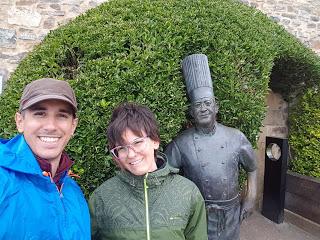
Es un pueblecito costero famoso por las olas y el surf. Caminamos por la bahía viendo, incrédulos, como los niños del pueblo hacían clases de surf en medio del temporal.
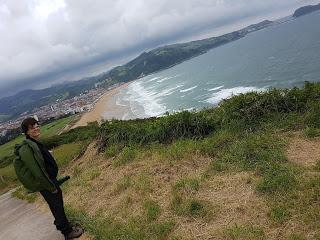
Paseamos por el Biotopo Protegido de Iñurritza, el mayor sistema de dunas de la zona, cubierto en su mayoría por un campo de golf. Desde ahí subimos al monte Talaimendi hasta llegar a la torre de vigilancia de su cima, desde la que se buscaban ballenas para su pesca. Los pescadores de antaño tenían tanta hambre que ya no quedan ballenas en la zona así que la torre está en ruinas.
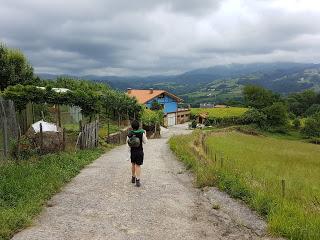
Subimos también hasta el Mirador de Santa Bárbara por el camino de la ruta de viñedos de Txacolí. El buen tiempo, más o menos, parecía que venía ya así que volvimos a Irún a prepararnos para partir hacia Elizondo al día siguiente, lugar donde comenzaríamos la GR11.
Enrique & Marina English versionSIGHTSEEING IN THE BASQUE COUNTRY - EUSKAL HERRIA
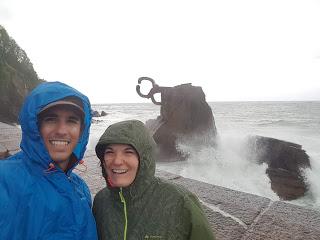
We left to Irún, a city in the border of Spain and France, with a great idea in mind. That is to complete the Pyrenees Great Route following the GR11 from the Cape Higuer on the Atlantic Coast of Spain to the Cape Creus in the Mediterranean shores of Catalonia.
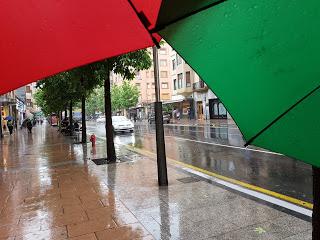 There we were welcomed by our host Álex, Ainara’s father. We met Ainara and her partner Sonia five years ago in New Zealand. Sonia and Ainara are full time travellers, not bloggers, instagramers or influencers, they just travel low cost and share their experience in an unpretentious, generous and useful blog NOMAD-AS they have been running for years.
There we were welcomed by our host Álex, Ainara’s father. We met Ainara and her partner Sonia five years ago in New Zealand. Sonia and Ainara are full time travellers, not bloggers, instagramers or influencers, they just travel low cost and share their experience in an unpretentious, generous and useful blog NOMAD-AS they have been running for years. 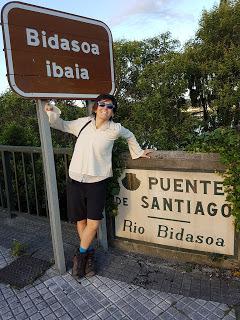 Álex picked us up from the bus station in Irún and took us to our friend’s place. He had set up the flat and even filled up the fridge just for us! After showing us around, he wanted to introduce us to his friend Carlos who has completed the same route over two times and is blessed with an unusually sharp memory to remember mountaineering tips.
Álex picked us up from the bus station in Irún and took us to our friend’s place. He had set up the flat and even filled up the fridge just for us! After showing us around, he wanted to introduce us to his friend Carlos who has completed the same route over two times and is blessed with an unusually sharp memory to remember mountaineering tips.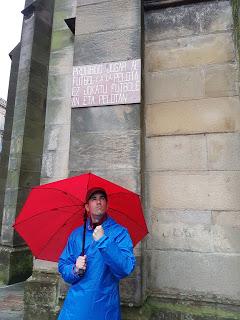
Unfortunately, the day after we arrived in Irún, the heaviest rain storm happening in the wettest year people can remember also got there. The day we had scheduled to start the trek, it poured 100 litres per square meter of rain and was windy as in Patagonia. It was a nonsense to go out walking under that weather, we’d be better off using a boat and a neoprene rather than hiking boots and gaiters. So, off we went sightseeing as regular tourists!SAN SEBASTIÁN - DONOSTIAWe crossed a couple of streets of the town on the way to the train station and soon realised that Enrique’s raincoat and rainproof pants and my own raincoat weren’t waterproof any more. They were too old and in just five minutes we were soaked to the bone.
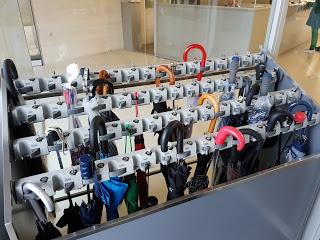 In just half an hour the train dropped us in San Sebastian, Donostia in Euskera language. Luckily, there’s a sports shop in the city centre of Donostia and we got geared up for the rain. Looking back, it was really fortunate that we found out that all that gear was damaged right then and there where we could easily find new garments rather than in the middle of a mountain storm.
In just half an hour the train dropped us in San Sebastian, Donostia in Euskera language. Luckily, there’s a sports shop in the city centre of Donostia and we got geared up for the rain. Looking back, it was really fortunate that we found out that all that gear was damaged right then and there where we could easily find new garments rather than in the middle of a mountain storm. 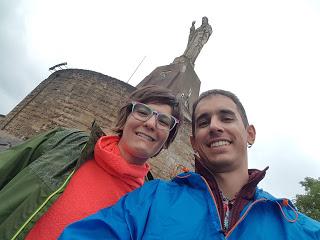
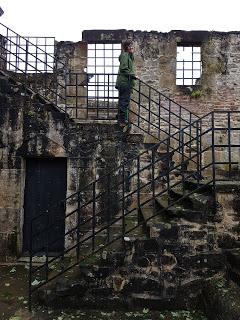 Despite the terrible weather, we liked Donostia very much. We wandered around the old streets under the rain for hours, visited the Castle of la Mota at the top of Urgull Hill where we enjoyed nice views of the storm watering the ocean.
Despite the terrible weather, we liked Donostia very much. We wandered around the old streets under the rain for hours, visited the Castle of la Mota at the top of Urgull Hill where we enjoyed nice views of the storm watering the ocean. 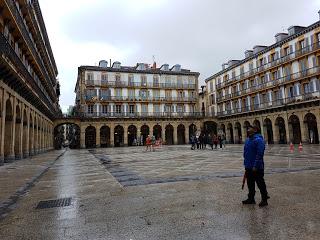
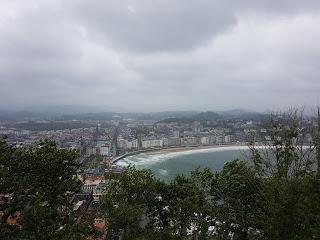 Just at the base of Urgull Hill there’s the local Museum of San Telmo. It’s free every Tuesday (it was Tuesday!) and displays a permanent exhibition about the Basque Culture. After that visit, we’re convinced that it was the Basques who pretty much created the civilisation and discovered all good inventions of all times such as the type M-5 stapler, the teeter-totter for kids with no friends and the parking for umbrellas. We ended our visit to Donostia walking by the sea in the popular Bay of the Concha (concha literally translates from clam) to see the beautiful corten steel sculpture by the local artist Eduardo Chillida called Wind’s Comb XV. ZARAUTZThe second day of the scheduled start was slightly better than the first. The sky was still bucketing down so we decided to delay the start for another day and visit the town where the celebrity Spanish chef Karlos Arguiñano has a hotel and a restaurant.
Just at the base of Urgull Hill there’s the local Museum of San Telmo. It’s free every Tuesday (it was Tuesday!) and displays a permanent exhibition about the Basque Culture. After that visit, we’re convinced that it was the Basques who pretty much created the civilisation and discovered all good inventions of all times such as the type M-5 stapler, the teeter-totter for kids with no friends and the parking for umbrellas. We ended our visit to Donostia walking by the sea in the popular Bay of the Concha (concha literally translates from clam) to see the beautiful corten steel sculpture by the local artist Eduardo Chillida called Wind’s Comb XV. ZARAUTZThe second day of the scheduled start was slightly better than the first. The sky was still bucketing down so we decided to delay the start for another day and visit the town where the celebrity Spanish chef Karlos Arguiñano has a hotel and a restaurant.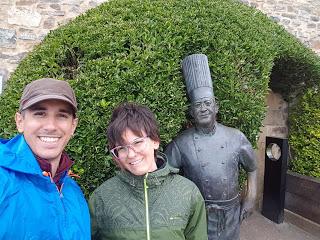
Zarautz is a very cute coastal town well known for its waves among surfers and for its good restaurants among foodies. We walked up and down the bay while looking at the local kids going out surfing regardless the bad weather.
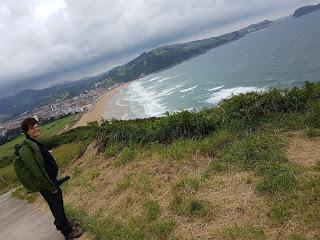 We also wandered over the largest dune system of the area: the protected biotope of Iñurritza which most of it is surprisingly used as a private golf course. From there we walked up to the top of Talaimendi hill where a tower stands by the ocean. This used to be the town’s shelter to keep watch on whales. The catch of these mammals was common in the Cantabric coast and, sadly, the excessive practice dissuaded the animals to come back and now is really hard to find whales visiting this part of the Atlantic Ocean.
We also wandered over the largest dune system of the area: the protected biotope of Iñurritza which most of it is surprisingly used as a private golf course. From there we walked up to the top of Talaimendi hill where a tower stands by the ocean. This used to be the town’s shelter to keep watch on whales. The catch of these mammals was common in the Cantabric coast and, sadly, the excessive practice dissuaded the animals to come back and now is really hard to find whales visiting this part of the Atlantic Ocean. 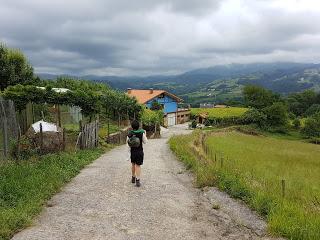 To finish our visit to Zarautz we climbed up to Santa Bárbara’s lookout following a route over vines of Txacolí, part of a longer trail linking wine vines from all parts of Euskadi. The weather started to be just OK and the rain was slowly turning reasonable or unexisting. We became hopeful about starting the hike on the third dayEnrique & Marina
To finish our visit to Zarautz we climbed up to Santa Bárbara’s lookout following a route over vines of Txacolí, part of a longer trail linking wine vines from all parts of Euskadi. The weather started to be just OK and the rain was slowly turning reasonable or unexisting. We became hopeful about starting the hike on the third dayEnrique & Marina
